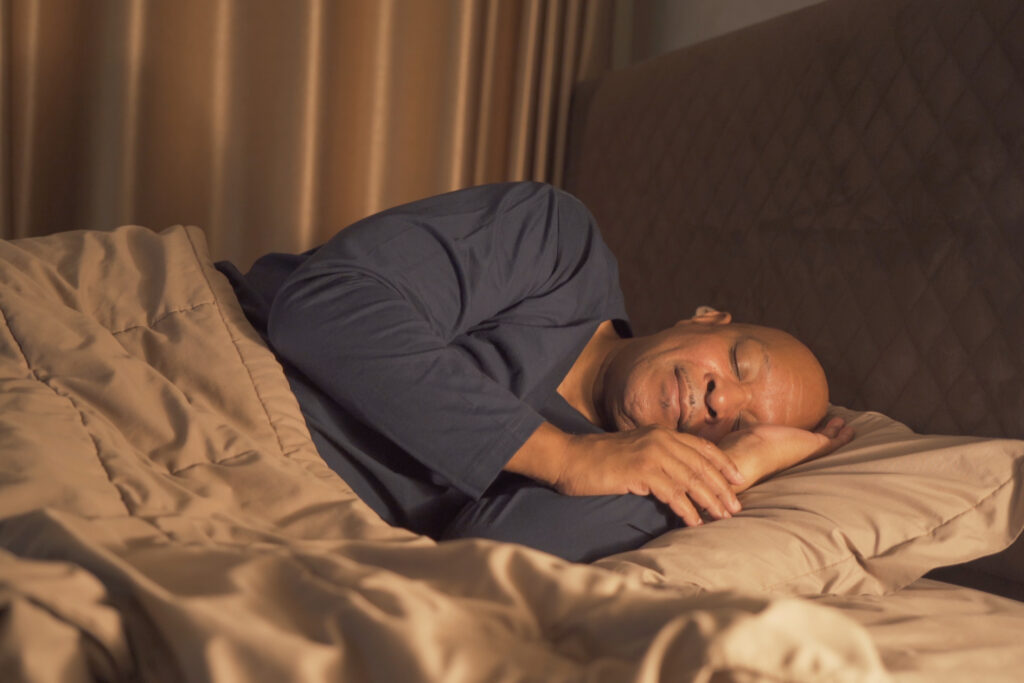 By Shea Daniels Graham, LPCC-S, Outpatient Telehealth Counselor
By Shea Daniels Graham, LPCC-S, Outpatient Telehealth Counselor
One of my favorite metaphors comes from Shift Journal and describes autism as being a hair-dryer brained person in a toaster-brained world. To paraphrase: If we think about the brain as a machine made of wires and gears we inherit, there is an imaginary world where most people are born with those wires and gears turned into a toaster. In this world where most people have toaster brains there’s going to be a lot of toast—white, wheat, rye, everything bagels, cinnamon raisin bread—but it’s all toast. Making toast is almost effortless for most people in this imaginary world so it becomes an integral, expected part of existing in society. Some people, though, are born with hair dryer brains, and while they can make toast—because you can make toast with a hair dryer, after all—it is going to fundamentally take them intentional effort, time, and skill building, to do what comes effortlessly for the toaster-brained…and even with that effort, time, and skill building, someone with a hair dryer brain is never going to be able to make toast as effortlessly as someone whose brain is a toaster. Now, if the roles were reversed, society would be created around having a hair dryer for a brain and those born with toasters for brains would have trouble drying hair. But in this imaginary world there are more people with toasters for brains, so people with hair dryer brains put a lot of time and energy into simply existing.
The National Institutes of Health estimates, as of 2020, that approximately 1 in 45 adults in the United States are living with autism spectrum disorder. Various studies indicate between 20% and 50% of adults living with autism are undiagnosed. Our understanding of autism has shifted drastically since the term was first used in 1911 by German psychiatrist Eugen Bleuler to describe a form of severe schizophrenia (Bleuler 1950 [1911]), Evans 2013). It wasn’t until the growth of child psychology in the 1960s that we begin seeing anything resembling modern autism criteria, such as Victor Lotter et. al’s 1966 epigenetic study to identify prevalence of autism in Britain’s children. Their screener, which significantly mirrors current autism diagnostic criteria, included 24 items related to social and pragmatic communication; vestibular, proprioceptive, and auditory sensory differences; and, repetitive behaviors. It is interesting to note, here, that Lotter et. al’s original screening tool was based on an earlier screening tool by child psychiatrist Mildred Creak (Evans, 2013). Creak’s screening tools included reports of internal experience which Lotter et. al. excluded due to concerns internal experience was too subjective to be useful.
This trend towards excluding diagnostic criteria based on internal experiences continues even today. Compared to other mental health and neurodevelopmental diagnoses in the DSM, Autism Spectrum Disorder is the only diagnosis not to include any report of internal experiencing (American Psychiatric Association, 2013).
Going back to the example above of toaster brains and hair dryer brains: some hair dryer brains are going to be more effective at making toast than others. Some people with hair dryer brains might be able to optimize their settings, the bread they use, etc., to make toast almost as well as someone whose brain is a toaster. They might even become so effective at making toast with a hair dryer than we wouldn’t know their brains weren’t toasters, if they didn’t tell us about how difficult it is to live with a hair dryer brain in a toaster world.
The Camouflaging Autistic Traits Questionnaire (CAT-Q) is a short, reliable, accurate, valid, and current autism screener appropriate for outpatient clinical use. The CAT-Q is particularly special because it is the only such screener which measures the internal experience of autism. It includes 24 screening questions such as, “I rarely feel the need to put on an act in order to get through a social situation,” “I have developed a script to follow in social situations,” “In social situations, I feel like I am ‘performing’ rather than being myself,” and “in social situations, I feel like I am pretending to be ‘normal,’” each scored on a A-G scale from “Strongly Disagree” to “Strongly Agree.” The CAT-Q has a high internal consistency both for the total scale and for the three sub-scales of Compensation, Masking, and Assimilation. Test-retest reliability was good, as was the total stability of this screener (Jones, 2021). Results are normed by gender for women, men, and non-binary/transgender populations.
Identifying traits of autism in our patients is a crucial part of providing competent care. Regardless of whether or not a patient who scores above-threshold on the CAT-Q opts to pursue formal assessment for autism, for those patients with above-threshold results, we as clinicians can tailor our interventions to acknowledge the patient’s traits of neurodivergence.
At times, tailoring our treatment to account for diagnosed autism, or traits of autism, is simply best practices. For example, in their 2018 study Cooper et. al identified that “almost all” therapists found it necessary to adapt Cognitive Behavioral Therapy interventions due to the increased rigidity of thinking people with autism experience. Without adaptations, the CBT interventions did not produce comparable results for adults with autism compared to neurotypical adults engaged in comparable treatment protocols.
At other times, tailoring our treatment to account for diagnosed autism, or traits of autism, is not only best practices—it is a critical component of not causing harm to patients. In his 2014 presentation to the EMDR Europe Association Conference, S. Paulson explained that due to the variety complex neurological differences individuals with autism present with, trauma processing using EMDR can be more difficult, or even harmful, without appropriate modifications to the standard treatment protocol. With appropriate accommodations, however, EMDR is an incredibly effective treatment for adults with autism who have a co-occurring trauma history. Lobregt-van Buuren et. al found that after 6-8 weeks of standard therapy followed by up to 8 EMDR sessions, at a 6-8 week follow up patients “showed a significant reduction of symptoms of post-traumatic stress (IES-R: d=1.16).”
Ultimately research tells us that compared to same-age peers, people entering mental health services who are later diagnosed with autism experience higher rates of depression, anxiety, and psychosis (French et. al 2023). Not only do people with undiagnosed autism experience higher rates of troubling mental health symptoms, but a 2022 study in Britain found 10% of people who died from suicide had evidence of elevated autistic traits indicative of likely undiagnosed autism—a number 11 times higher than the rate of autism in the general population. As research tells us people with autism, or traits of autism, are unlikely to respond as well to therapeutic interventions unless those interventions are adapted appropriately, screening for traits of autism becomes a crucial best practice.
As a clinician I tend to utilize the CAT-Q screener as readily as I use a PHQ-9 or GAD-7. I use the CAT-Q any time a patient presents with a combination two or more diagnoses whose symptoms may align with autism. I also utilize the CAT-Q screener when I have a patient reporting chronic social difficulties or difficulties with sensory input, with patients who report a chronic history of ineffective mental health interventions, and with patients who report wondering if they have autism. Not every person with autism struggles with mental illness—but every person with autism who does enter mental health services has a right to high quality care tailored to their brains.
After all, if we only provide toaster mechanics, how will the hair dryers ever get a tune up?
Citations
American Psychiatric Association. (2013). Diagnostic and statistical manual of mental disorders (5th ed.).
https://doi.org/10.1176/appi.books.9780890425596
Bleuler E. (1950[1911]) Dementia Praecox or the Group of Schizophrenias. New York: International Universities
Cassidy, S et al. Autism and autistic traits in those who died by suicide in England. BJPsych; 15 Feb 2022;
DOI: 10.1192/bjp.2022.21
Dietz, P. M., Rose, C. E., McArthur, D., & Maenner, M. (2020). National and state estimates of adults with autism spectrum disorder. Journal of Autism and Developmental Disorders, 50(12), 4258–4266. https://doi.org/10.1007/s10803-020-04494-4
French B, Daley D, Groom M, Cassidy S. Risks Associated With Undiagnosed ADHD and/or Autism: A Mixed-Method Systematic Review. J Atten Disord. 2023 Oct;27(12):1393-1410. doi: 10.1177/10870547231176862. Epub 2023 Jun 21. PMID: 37341291; PMCID: PMC10498662.
Jones, N. (2020, April 21). The CAT-Q. Embrace Autism. https://embrace-autism.com/cat-q/
Lobregt-van Buuren, E., Mevissen, L., Sizoo, B. B., & de Jongh, A. (2018, August).
Eye movement desensitization and reprocessing (EMDR) therapy as a feasible and potentia effective treatment for adults with autism spectrum disorder (ASD) and a history of adverse events. Journal of Autism and Developmental Disorders
Lotter V. (1966) ‘Epidemiology of Autistic Conditions in Young Children’, Social Psychiatry 1: 124–37 [Google Scholar]
Mary. (2010, October 11). A Hair-Dryer kid in a Toaster-Brained world.
https://www.shiftjournal.com/2010/10/11/a-hair-dryer-kid-in-a-toaster-brained-world/
Paulson, S. (2014, June). EMDR with autism. In EMDR clinical practice symposium (Marilyn Luber, Chair).
Symposium presented at the 15th EMDR Europe Association Conference, Edinburgh, Scotland
Rutter M. (1998) ‘Developmental Catch-up, and Deficit, following Adoption after Severe Global Early
Privation. English and Romanian Adoptees (ERA) Study Team’, Journal of Child Psychology and Psychiatry 39: 465–76 [PubMed] [Google Scholar]
 Why It Matters:
Why It Matters: The Impact of Drugs and Alcohol on Mood Stability
The Impact of Drugs and Alcohol on Mood Stability Paul Keck, MD, Senior Consulting Psychiatrist and Founding President and CEO – Emeritus is the author of this article. Dr. Keck is Emeritus Professor of Psychiatry and Behavioral Neuroscience at the University of Cincinnati (UC) College of Medicine. He is also Senior Consulting Psychiatrist and Emeritus Founding President and CEO of the Lindner Center of Hope, a state-of-the-science, UC-affiliated comprehensive mental health center in Mason, Ohio. Dr. Keck has conducted extensive research in bipolar disorder, depression and clinical psychopharmacology, supported by grants from the NIMH, NARSAD, the Stanley Foundation, the Marriott Foundation, and industry. Since 1996, he has been in the top 20 of the most cited scientists in the world publishing in the fields of psychology and psychiatry.
Paul Keck, MD, Senior Consulting Psychiatrist and Founding President and CEO – Emeritus is the author of this article. Dr. Keck is Emeritus Professor of Psychiatry and Behavioral Neuroscience at the University of Cincinnati (UC) College of Medicine. He is also Senior Consulting Psychiatrist and Emeritus Founding President and CEO of the Lindner Center of Hope, a state-of-the-science, UC-affiliated comprehensive mental health center in Mason, Ohio. Dr. Keck has conducted extensive research in bipolar disorder, depression and clinical psychopharmacology, supported by grants from the NIMH, NARSAD, the Stanley Foundation, the Marriott Foundation, and industry. Since 1996, he has been in the top 20 of the most cited scientists in the world publishing in the fields of psychology and psychiatry.
















